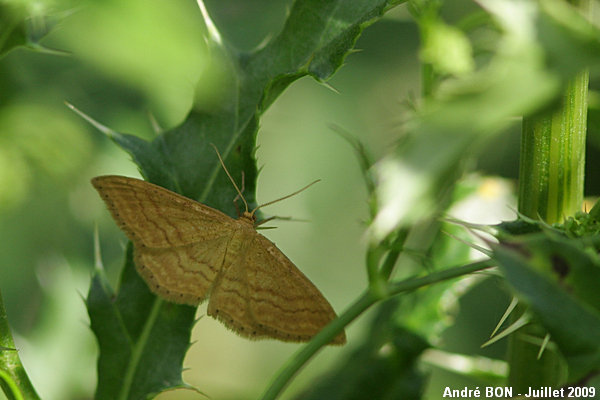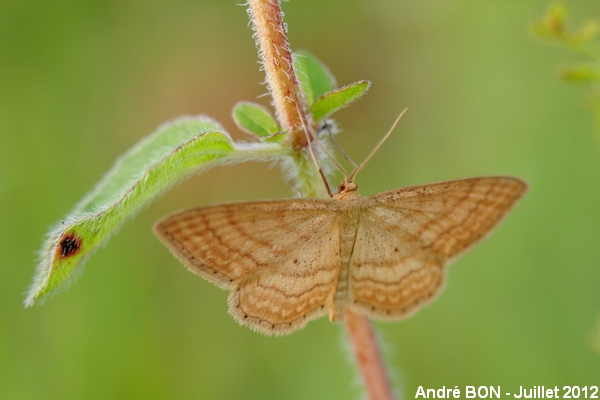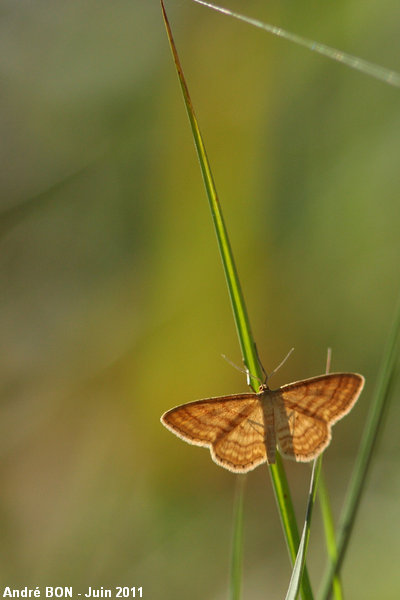


| Bright Wave (Idaea ochrata (Scopoli, 1763)) |



|
|
Scientific name: Idaea ochrata (Scopoli, 1763) Common name: Bright Wave Other names: Phalène ocreuse French name: Acidalie ocreuse Order: Lepidoptera Suborder: Heterocera Family: Geometridae Subfamily: Sterrhinae Wingspan: 19-24 mm. Biotope: Open habitats. Geographic area: Europe. Flight time: June to August. Number of generations : 1 Caterpillar: Ochre with two brown lines. Host plant: The larva feeds on Hawk's beard flowers (Crepis spp.), Dandelion flowers (Taraxacum), Coltsfoot flowers (Tussilago) among others. |
The Bright wave has ochre coloured wings. They are crossed by dark lines. The bolder ones are in the post median area. It shows a sharp angled tip on the fore wings. The most similar species is Idaea serpentata. The Bright Wave is characterized by a series of black dots on the outer fringe of the wings. Idaea serpentata has uniform coloured fringes. Idaea serpentata shows one discal black spot in the centre of each wing (better visible on the hind wings). The Bright wave also shows a black discal spot on the hind wings. It is located before the first dark cross line on the basal side of the wing. This black discal spot is located after the first dark cross line on Idaea serpentata. The Bright Wave over winters as a larva. |
| [To know more about the Bright Wave] [Next picture] [Top] |

|
I have disturbed this bright Wave during its diurnal rest, enabling me to shoot a few pictures. |
| [To know more about the Bright Wave] [Next picture] [Previous picture] [Top] |

|
The clearly visible black dots on the fringes of the wings and the black discal spot of the hind wings located inside the uniformly coloured basal area enable to confirm the identification of this species. |
| [To know more about the Bright Wave] [Previous picture] [Top] |

|
Here is a back-lighted picture. You can see the hind legs by transparency through the wings. |